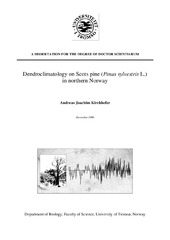An interannual study of foraging behaviour in sympatrically breeding macaroni Eudyptes chrysolophus and chinstrap penguins Pygoscelis antarcticus at Bouvetøya
Permanent lenke
https://hdl.handle.net/10037/18999Dato
2019-08-15Type
Master thesisMastergradsoppgave
Forfatter
Narvestad, AudunSammendrag
Species are likely to segregate their ecological niches to minimize competition for resources, but for centrally foraging predators that breed on sub-Antarctic islands in the Southern Ocean the possibility of niche segregation may be minimal. This study is the first to examine the spatial and trophic aspects of the foraging niche of sympatrically breeding macaroni and chinstrap penguins at the poorly-studied sub-Antarctic island Bouvetøya over multiple years. To measure at-sea movements and dive behavior, 90 breeding macaroni Eudyptes chrysolophus and 49 breeding chinstrap penguins Pygoscelis antarcticus were deployed with satellite transmitters and time-depth recorders over two austral summer breeding seasons, 2015 and 2018. In addition, tracked birds were sampled for blood for biogeochemical dietary analysis. Chinstrap penguins displayed large interannual variation in foraging behavior between the two years, and dove deeper, utilized larger foraging areas during late breeding stages and showed enriched values of δ15N in the first- compared to the second- year. Conversely, macaroni penguins dove to similar depths and displayed similar values of δ15N in both years. Our results suggest that potentially low krill abundances in the waters around Bouvetøya in 2015 forced the chinstrap penguins to search for alternative prey, like myctophid fishes, which resulted in increased overlap in the two species' foraging niche. Consequently, the chinstrap penguins may have faced increased interspecific competition for prey or catabolism from food shortage. Irrespective, our findings may partly explain the decreasing number of breeding chinstrap penguins at the world's most remote island, Bouvetøya.
Forlag
UiT Norges arktiske universitetUiT The Arctic University of Norway
Metadata
Vis full innførselSamlinger
Copyright 2019 The Author(s)
Følgende lisensfil er knyttet til denne innførselen:
Med mindre det står noe annet, er denne innførselens lisens beskrevet som Attribution-NonCommercial-ShareAlike 4.0 International (CC BY-NC-SA 4.0)
Relaterte innførsler
Viser innførsler relatert til tittel, forfatter og emneord.
-
Bearded seal vocalisations across seasons and habitat types in Svalbard (Norway)
Martínez Llobet, Samuel (Master thesis; Mastergradsoppgave, 2019-08-15)Male bearded seals use vocal displays to attract females and compete with other males during the mating period, making it possible to monitor breeding populations using passive acoustic monitoring (PAM). This study analysed year-round acoustic data from underwater recorders at three sites with different environmental conditions in Svalbard (Norway). Male bearded seals vocalised for an extended ... -
Progression in humpback whale song structure and complexity on a subarctic feeding ground in Northern Norway
Martin, Saskia C. (Master thesis; Mastergradsoppgave, 2021-08-16)Male humpback whales (Megaptera novaeangliae) sing structurally complex songs traditionally associated with low latitude breeding grounds. This vocal behaviour is increasingly reported outside these areas. All singers in a given population sing the same version of a song that is constantly evolving with modifications on different levels within the song structure. This study provides the first detailed ... -
Dendroclimatology on Scots pine (Pinus sylvestris L.) in northern Norway
Kirchhefer, Andreas Joachim (Doctoral thesis; Doktorgradsavhandling, 2000-03-17)A total of ten tree-ring chronologies of Scots pine, Pinus sylvestris L., was constructed between the Vesterålen archipelago and the Finnmarksvidda in order to investigate the regional variability of radial growth and climate response of pine. The longest tree-ring chronology, located in Forfjorddalen in Vesterålen, was highly significant back to AD 1354. The study area was divided into three ...


 English
English norsk
norsk



